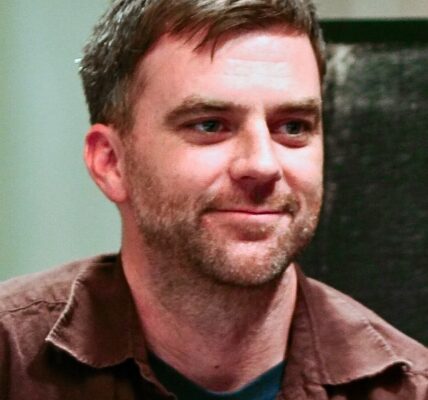For modern cinemagoers, the sequel has become a familiar stalwart of the summer schedule. No genre, it seems, is immune; sequels (and prequels) have popped up in everything, from horror to teen musicals, drama to action and beyond. And, with a few rare exceptions, it’s the Hollywood studios that have become the home of the franchise; a dependence on an ‘if it ain’t broke, don’t fix it’ formula of guaranteed box-office success has spawned behemoths like The Lord of the Rings, Pirates of the Caribbean and, of course, Harry Potter, the eighth, and final, instalment of which is due in cinemas a decade after the first film. You can now get offer on movies booking.
It’s not alone. 2011 will see a record number of sequels in cinemas, with an astonishing 27 of the year’s theatrical releases being sequels (or prequels), smashing the previous highest tally of 24 in 2003. To put this into perspective, that figure comprises one fifth of all films released this year in the United States.
A comprehensive report by industry commentators Box Office Mojo (www.boxofficemojo.com) breaks down the figures like this:
Nine second movies: Cars 2; Diary of a Wimpy Kid: Rodrick Rules; The Hangover Part II; Happy Feet 2; Hoodwinked Too! Hood Vs. Evil; Johnny English Reborn; Kung Fu Panda 2; Piranha 3DD; Sherlock Holmes: A Game of Shadows
Five third movies: Alvin and the Chipmunks: Chip-Wrecked; Big Mommas: Like Father Like Son; Madea’s Big Happy Family; Paranormal Activity 3; Transformers: Dark of the Moon
Five fourth movies (the highest number ever): Mission: Impossible – Ghost Protocol; Pirates of the Caribbean: On Stranger Tides; Scream 4; Spy Kids 4: All the Time in the World; The Twilight Saga: Breaking Dawn—Part 1
Five fifth movies (again, the highest number ever): Fast Five; Final Destination 5; Puss in Boots; X-Men: First Class; Winnie the Pooh
Two seventh movies: The Muppets; Rise of the Planet of the Apes
One eighth movie: Harry Potter and the Deathly Hallows (Part Two)
If the above list isn’t enough to illustrate just how important franchises have become to the major studios, consider this snippet of information from The Wall Street Journal, which notes that Disney Studios will spend ‘80 per cent of its production budget this year on franchise films, compared with 40 per cent in 2010.’ It’s clear that Hollywood banks a huge amount on recreating previous successes, and sequels are so lucrative that many are being rolled out decades after their predecessors lit up the box office. The new Muppets movie, for example, comes 12 years after the last one, while Scream fans have had to wait 11 years for a new instalment. And that’s nothing compared to 2010 sequels Tron: Legacy and Wall Street: Money Never Sleeps, however, which came along 28 and 23 years after the original movies.
Sequels undoubtedly equal big business, but just how much can a studio expect to earn as a franchise progresses? Should they always expect a profit, based on previous successes, or does the law of diminishing returns apply even in Hollywood? Now filmmakers and fans alike can discover the true economics of sequels thanks to the eye-opening interactive information graphic created by Daniel Hom, data analyst at Tableau Software (the information analysis firm founded by Pixar’s Pat Hanrahan, computer scientist Chris Stolte and data expert Christian Chabot). And, as Hom explains, it was these same questions that led him to create it. “I had a question and I wanted an answer,” he says. “There are a lot of sequels coming out of Hollywood this summer, and that got me thinking. I know the financial incentives of why movie studios produce sequels and the safety net they provide, but are they actually more profitable to make? And if so, what qualities separate the ones that are profitable and the ones that aren’t?”
Once Hom had the idea, the process of creation was surprisingly simple, despite its complex information. “I went to various movie sites with box-office stats,” he says. “The process itself — figuring out which franchises I wanted to look at and getting all the numbers together — took maybe a few hours. Visualising that took just a fraction of the time.”
It was after Hom had created the graphic that the information really began to reveal itself, and even he was surprised at one major issue it threw up. “One thing I didn’t expect was to see such little correlation between film budget and profit,” he reveals. “I know that in many people’s minds big budgets equal a bigger box office, which also seems to be true. But if the bigger budget eats away at potential profit, I think it’s worth for studios to ask, especially for film franchises, is there any way to keep the audience interested in a franchise without spending more money?
“It’s clear that movie sequels, on average, tend to rake in less profit than its predecessor,” Hom continues. “But it’s important to note that, most of the time, they still do make a profit. When deciding between producing a fifth sequel to a tired franchise or an original flick based on an unproven concept, sometimes it’s understandable why movie studios will go with the fifth sequel that very few people even want. Sometimes new, and great, ideas are still duds. Audiences can be unpredictable.
“It’s also worth mentioning that a movie franchise’s budget tends to increase with each iteration, but that doesn’t necessarily lead to more profit. Just look at the third Pirates of the Caribbean movie. At some point it seems counterproductive to spend more on making a movie, especially when it seems that doing so won’t expand your audience.”
And Hom thinks that film distributors could learn some important lessons from his infographic, as it clearly demonstrates which sequels and franchises have been more popular with audiences. “If you take a look at which franchises have longer and stronger legs, I think you’ll see one of two things: they have a definitive end, or they constantly reinvent themselves,” he explains. “Take Lord of the Rings and Harry Potter. Both are franchises that break the mould of sequels performing worse than its predecessor. They also both have endings. At some point stories, even the greatest stories, have to end.
“Then there’s the films that keep going, but each movie almost feels like it stands on its own,” Hom continues. “Take for example, a franchise that is not on the list: James Bond. The main reason I kept it off is because there’s just too many movies that it would skew the results, but also because the franchise is really more an individual story. James Bond changes with every few movies, and they’re rarely interconnected. Yet this is one of the longest-running movie franchises in history. If you look at some other franchises that I did put on the list that are successful, you’ll find slightly similar traits. Take the new Batman movies. They’re very successful since they reinvent the franchise, even though they’re in a long line of other Batman-related flicks. In fact all the superhero movies are like this. Audiences don’t tire of superhero movies, they never will. But they will get tired of seeing the same character do the same thing. It’s not compelling.
“For movie studios, the strength of a franchise is that the world is familiar,” Hom acknowledges. “The audience knows what to expect. Think of the Star Trek reboot from 2009. Everyone knew the characters already, but no one had seen them act the way they did nor in the situations they were thrown into. It was original and fresh, even if it was based on a world created decades ago.”
Of course, all of this information is interesting in itself, particularly given the dominance of sequels in today’s movie landscape, but Ham was aware that he needed to present his findings in a clear and compelling way. “I like to make visualisations interactive because it puts control of the story in the hands of the user, and that’s one core value of Tableau itself,” he says. “Interactivity gives users the freedom to see the story themselves, view other angles to the story or even discover entirely different points of view altogether. It’s also more fun! I’d invite you to play with the visual and see the story for yourself. See if you spot any trends in which franchises are evergreen and which ones fade away. That’s the fun part really. You got to see what the data tells me, now I get to see what the data tells you.” •










